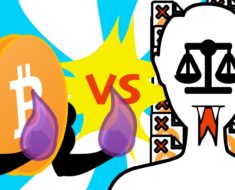
Cryptocurrency is a digital currency that operates on a decentralized, peer-to-peer network. Transactions happen directly between users and not through a central server. These transactions are verified by network nodes and recorded in the blockchain. The process of cryptocurrency mining aims to generate units of the currency. The network uses complex cryptography to ensure that transactions cannot be easily manipulated or counterfeited.
1.Utility Cryptocurrency
Utility cryptocurrency is aimed at the usage of the currency. These are coins and tokens with a specific purpose that is exchanged for goods and services. Coins like Ethereum are used to develop decentralized applications, while Bitcoin is usually used to purchase goods online.
2.Speculation Cryptocurrency
The cryptocurrency is designed to be sold on the exchange and could quickly grow in value as it attracts new investment, has no widely accepted use case, or will have a limited supply. These coins are bought purely for speculative purposes, such as Bitcoin Cash and Cardano, which recently hit new records of trading prices above USD 1,000 per coin.
3.Store of Value Cryptocurrency
Cryptocurrencies designed to work as a secure store of value for long periods, such as Bitcoin and Monero, have their value determined by market demand. These cryptocurrencies have a stable supply, with some having a total fixed supply. The primary purpose is to allow people to save their wealth digitally. They can be used as a hedge against inflation or significant economic crisis—some cryptocurrencies store value by using the proceeds from sales of their product or service.
4. Privacy Cryptocurrency
Cryptocurrencies that focus on privacy and anonymity, such as DASH and Zcash, combine advanced encryption technology with blockchain technology. They exist in a completely decentralized network, meaning any one financial institution does not control them.
Blockchain is the public transaction ledger that records cryptocurrency transactions. The blocks of transactions are linked together and secured using cryptography. Every block contains a timestamp and link to the previous block, forming a chain; their existence cannot be manipulated without knowing the previous blocks. Each transaction is attached to the most recent block it’s part of, so anyone tampering with that chain would invalidate all future blocks.
Dil Bole Oberoi





